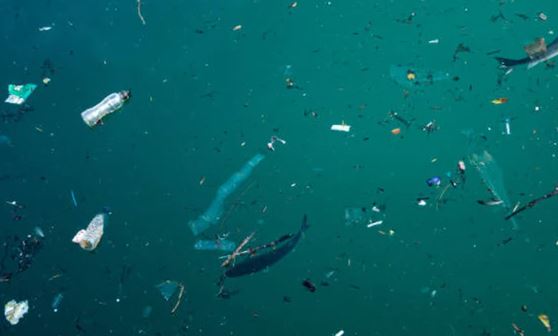July 15 (Reuters) – Robot fish that “eat” microplastics may one day help to clean up the world’s polluted oceans, says a team of Chinese scientists from Sichuan University in southwest China.
A robot fish is a type of bionic robot that has the shape and locomotion of a living fish. According to the reports, there have already been approximately 40 different types of fishes built in 30 designs having only the capability to flip and drift in water. But this time something new is added to this concept of robot fish.
Subscribe to our Telegram channel for the latest updates from around the world
Chinese scientists came up with a new idea to the concept of robot fish, they have built fish that are soft to touch similar to that of real fishes and are just 1.3 centimeters (i.e. 0.5 inches) in size. There is an inbuilt feature to these robotic fish that helps them eat microplastics from the water body they are kept in. This feature of eating away all the microplastics might one day help in cleaning up all the polluted oceans or other water bodies. The team of Chinese scientists have already tested the efficiency of the fishes in getting rid of the microplastics, by keeping them in the shallow water where they sucked up all the microplastics away.
The main aim of the team is to enable them to collect microplastics in deeper water and provide information to analyse marine pollution in real time, said Wang Yuyan, one of the researchers who developed the robot.
“We developed such a lightweight miniaturised robot. It can be used in many ways, for example in biomedical or hazardous operations, such as a small robot that can be localised to a part of your body to help you eliminate some disease.”
Another amazing feature of these fishes is that they can swim upto 2.76 body lengths per second, faster than most artificial soft robots. These fishes are able to absorb pollutants and recover themselves even when it is damaged.
These black robot fishes left in water can still be controlled by the scientists from outside to avoid crashing into other fishes or ships for that matter with the irradiated light feature, helping it to flap its fins and wiggle its body.
It is made keeping in mind the safety of other fishes: If it is accidentally eaten by other fish, it can be digested without any harm as it is made from polyurethane, which is also biocompatible, Wang said.
The fish is able to absorb pollutants and recover itself even when it is damaged. It can swim up to 2.76 body lengths per second, faster than most artificial soft robots.
“We are mostly working on collections (of microplastics). It is like a sampling robot and it can be used repeatedly,” she said.
For similar articles, join our Telegram channel for the latest updates. – click here




























































